Everything you need to know about bud boosters
August is approaching. The month in which outdoor-grown cannabis will enter the flowering phase. In our climate the sooner the better. August is also the ideal time to let autoflowers flower. You can do this by sowing them in May. This gives you more benefit from the better weather conditions and more pleasant temperatures.
You can also manipulate the non-autoflower plants, the photosensitive varieties. By darkening them you bring forward the onset of the flowering phase and so you can also enjoy the above benefits.
The beginning of the flowering phase
No matter how it turns out, eventually the plant will enter the flowering phase. If you have arrived at this point in the growing process, you have already experienced a great deal with the little plant.
You have seen it germinate and you have been there when it grew from seedling to adult. It depends on which variety or strain you have chosen whether flowering manifests itself at the beginning or at the end of August. So when there will be signs of flowering. If you are growing indoors and you switch the lighting to 12/12, the bloom phase, it will take about two weeks before bloom is visible. With an outdoor crop you can say that when there are flowering hairs that form an incipient bud, the plant is approximately in the second week of flowering.
If you look carefully and keep a close eye on your plants, you can tell when an outdoor plant is about to enter the flowering phase. You will then see that a slight discoloration takes place in the places where the buds will later form. You will also see that perhaps a few large leaves at the bottom or inside of the plant will turn yellow. At this point the plant needs more certain nutrients and will start drawing these from its own reserves. Let's take a closer look at these nutrients.
Basics: N-P-K nutrients
The basics of plant nutrition consist of three components: nitrogen, phosphorus and potassium. They are necessary for plants to grow and flourish. The abbreviations of these substances also give the name to the nutrient and it is therefore called N-P-K nutrient. However, it is the ratio of nitrogen, phosphorus and potassium that will need to be varied in the different life stages of the plant.
Nitrogen (N)
Nitrogen ensures that the plant becomes vital with beautiful green leaves, a sturdy stem and strong branches. If the leaves of a plant suddenly start to turn lighter and even yellow, this usually indicates a nitrogen deficiency.
Signs of nitrogen deficiency in plants
Prolonged nitrogen deficiency will lead to weak plants. Weak plants that become limp and have little resistance. They become susceptible to disease and fungi. The plant will produce few and fewer large buds because all of the plant's energy is used to survive.
Phosphorus (P)
Phosphorus promotes the absorption of the plant. It contributes to the plant being able to breathe properly and absorb a lot of oxygen from its environment. And it promotes root development allowing the plant to absorb more water and nutrients. Something that is very desirable in the flowering phase of our beloved weed plant.
Signs of phosphorus deficiency in plants
When phosphorus is deficient, the plant will have difficulty growing and will not make large leaves. Older leaves will have yellow-brown edges and their stems will turn purple.
Potassium (K)
Last in the list is the K of potassium, but this is certainly not the least of the three. Among other things, it ensures the transport of water and carbohydrates in the plant. Important to get a sturdy plant with a high resistance to disease and fungi. And it protects the plant better against temperature fluctuations and cold, something that is a great advantage in outdoor cultivation.
Signs of potassium deficiency in plants
With too little potassium you will notice that leaves wither prematurely. The growth and flowering are less exuberant and the yield will be lower.
Boosters, Bloomers and Top-shooters
You need the above substances for a successful grow. The last two, phosphorus and potassium, are important in the flowering phase. This is the time when the plant has to start producing and a booster can contribute to that. There are several brands of boosters, bloomers and top-shooters available, like: BAC Organic PK Booster, BAC Bloom Stimulator or Biotabs Liquid Organic Bud-booster.
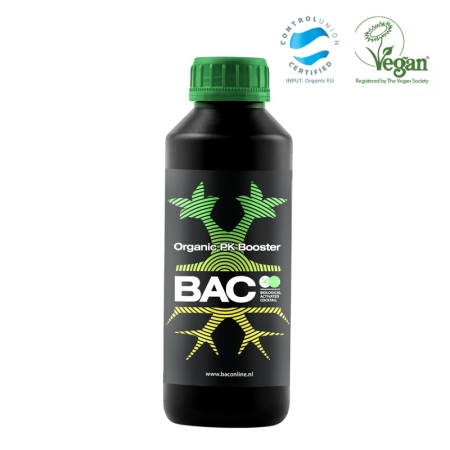
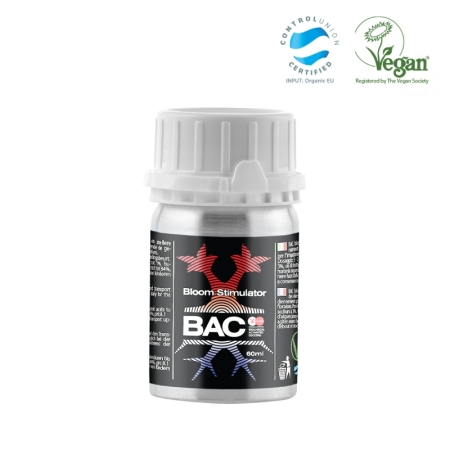
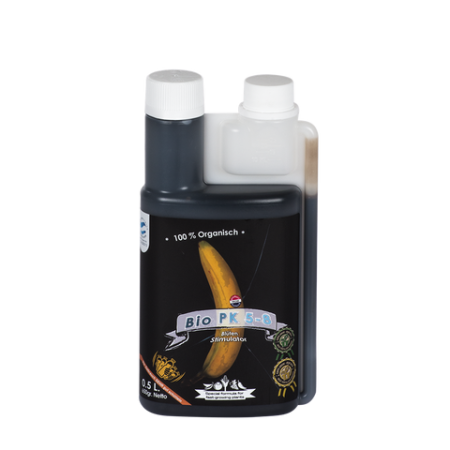
The names sound like they pump up or inflate the buds. But the bottom line is that a booster is an addition of extra phosphorus and potassium, on top of the existing nutrition. Therefore, the timing and amount of giving a booster is very important. Every grower wants to blow up his buds and more often than not too much phosphorus and potassium are given too soon. The result is a surplus of both substances that prevents the plant from absorbing them. Now the plant will only take up nitrogen from its food. The result is a nitrogen surplus that results in very dark leaves with sometimes withered tips.
Why a booster?
Now you know that a booster consists of phosphorus and potassium. So you might think that a booster is necessary because it is already present in your regular nutrient. The answer is yes! In the different phases the plant goes through, its needs also vary. Of course a basic nutrient is sufficient and the plant will grow and bloom on it. But with the right addition at the right time, the yield is considerably greater.
The beginning of the flowering stage
At the beginning of the flowering stage, when the plant starts to develop buds, it can certainly use some extra phosphorus. The extra addition of phosphorus will ensure better bud development and vitality of the plant. At the beginning of the flowering phase the plant is also still in the stretching phase. In this last stage of the plant's growth, a little extra phosphorus will give it more energy to grow big and vital and to get a good start on the buds' bloom.
Later in the flowering stage
In the later flowering stage of a cannabis plant the need for potassium will increase. When creating the buds, the plant benefits greatly from a greater intake of sugar and carbohydrates from the diet. So the more energy the plant takes in, the more energy there is in the plant to produce large and thick, well-ripened buds.
Use the booster at the right time
As mentioned earlier, overdosing on phosphorus and potassium is counterproductive. Adding a PK booster in the right way is therefore very important. Because phosphorus and potassium are in the basic nutrient, it is not necessary to add them anyway until week two of flowering. This is the second week on the 12/12 schedule and the moment when flowering hairs begin to appear in the places where the buds will form. From this moment it is advisable to start using a booster. The ideal time to use an organic booster is in week 2, 3 and 4. Stop after week four. The soil will partially absorb the substances and will continue to give them to the plant after week four. Continuing to give the booster will only lead to a surplus.
Use it to your advantage
So with the right use of a booster you will increase the yield of your plant. Which booster you use does not really matter. However, it is recommended to stay with the same brand as the basic nutrient you use, because they are the most attuned to each other.
Did you enjoy reading this article and do you like to write yourself? We are always looking for people who share our passion for natural products, who can also translate this into great texts. And we have an interesting reward for this. View all information for writers.
Bio PK 5-8
Liquid Organic Bud-booster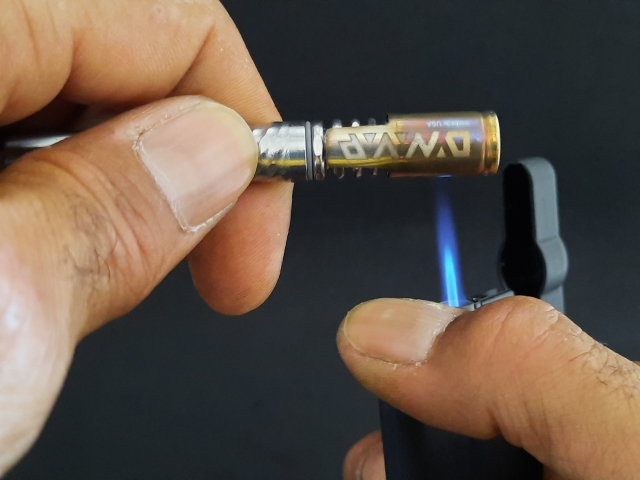 Blog Vaporizers
Smartest Vaporizer for Weed: DynaVap VapCap 'M' 2021 review
For quite some time now I have been having fun with my last purchased vaporizer. It has been to many festivals, concerts and other outings. I would li [..]
01-11-2022
7 minutes
Blog Vaporizers
Smartest Vaporizer for Weed: DynaVap VapCap 'M' 2021 review
For quite some time now I have been having fun with my last purchased vaporizer. It has been to many festivals, concerts and other outings. I would li [..]
01-11-2022
7 minutes
 Blog Organic Cannabis Growing
How do you store Buds and other Cannabis Products?
I love tasty cannabis. Nothing joys me more than a perfectly aromatic flower of cannabis. Perhaps this is more important to me than how high I get fro [..]
29-09-2020
8 minutes
Blog Organic Cannabis Growing
How do you store Buds and other Cannabis Products?
I love tasty cannabis. Nothing joys me more than a perfectly aromatic flower of cannabis. Perhaps this is more important to me than how high I get fro [..]
29-09-2020
8 minutes
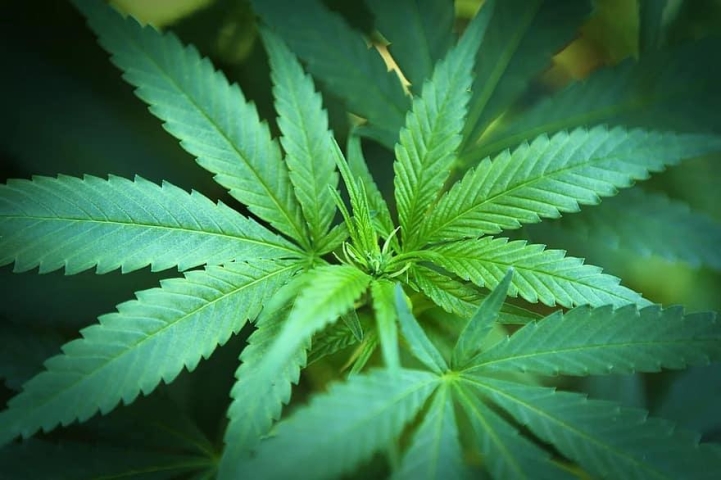 Blog Cannabis
CBD, THC and other Cannabinoids
The interesting world of cannabinoids is still under investigation by science. What is the effect of these different substances and what are their app [..]
Blog Cannabis
CBD, THC and other Cannabinoids
The interesting world of cannabinoids is still under investigation by science. What is the effect of these different substances and what are their app [..]









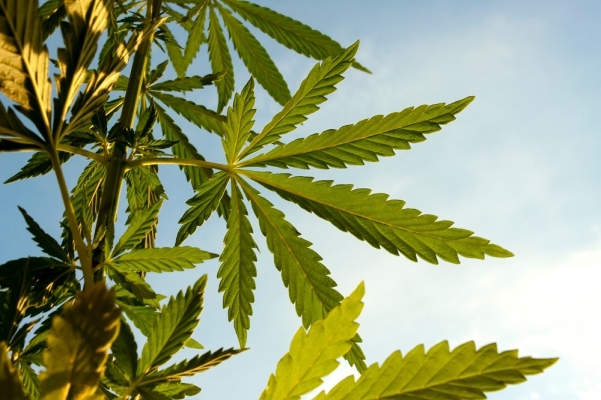



 Nederlands
Nederlands Italiano
Italiano Deutsch
Deutsch Français
Français Português
Português Español
Español Polski
Polski